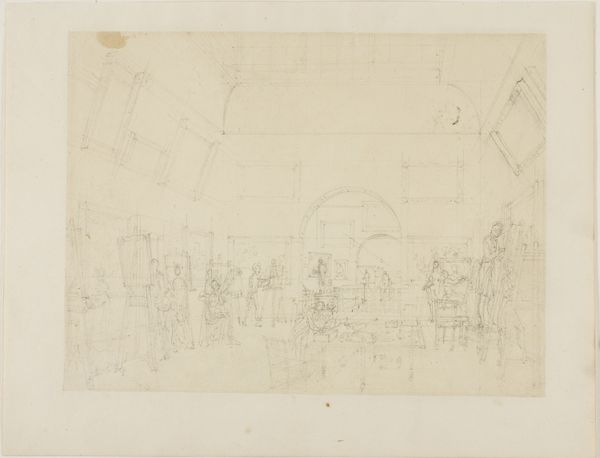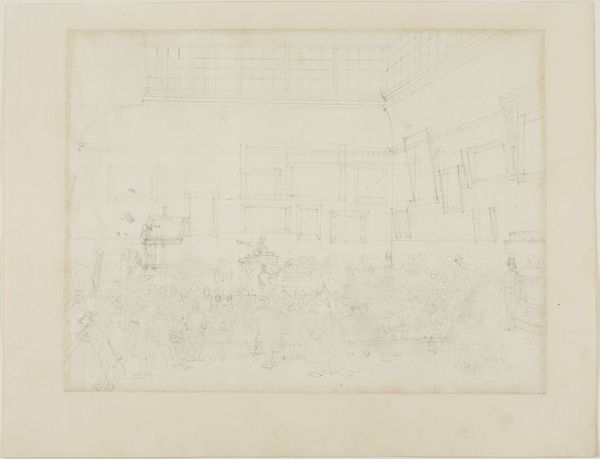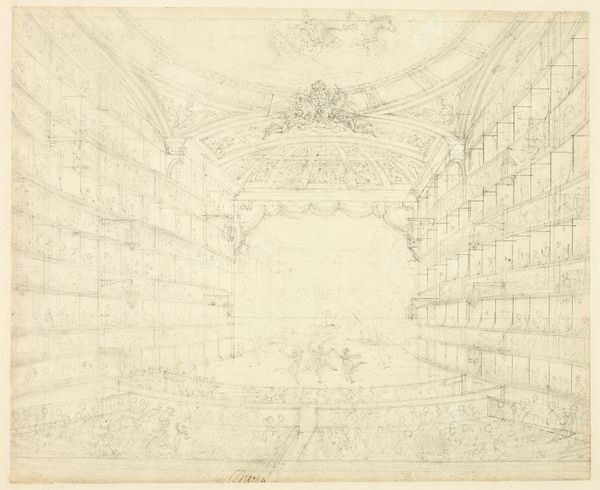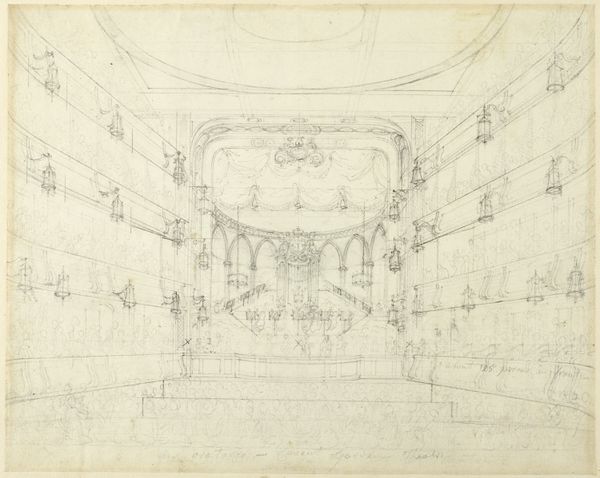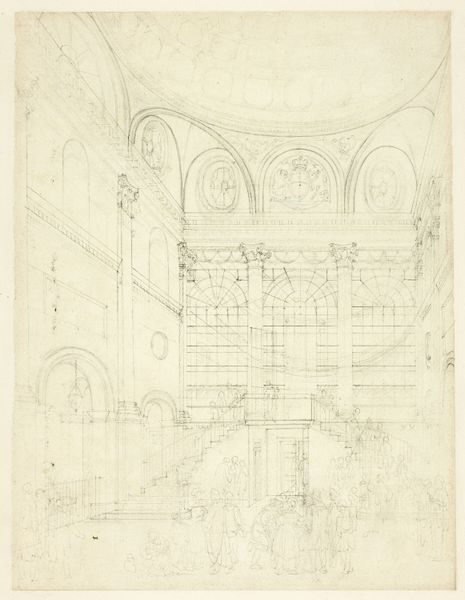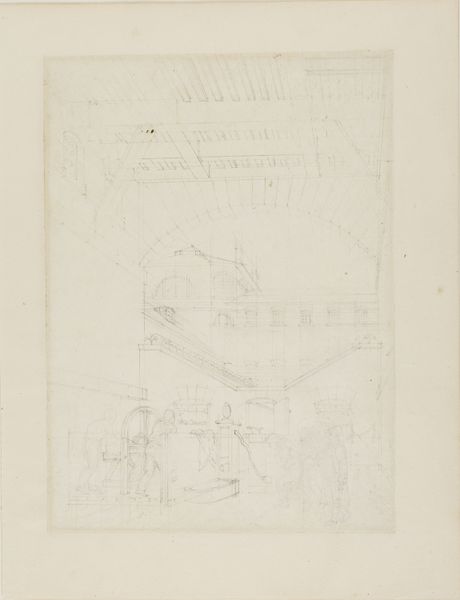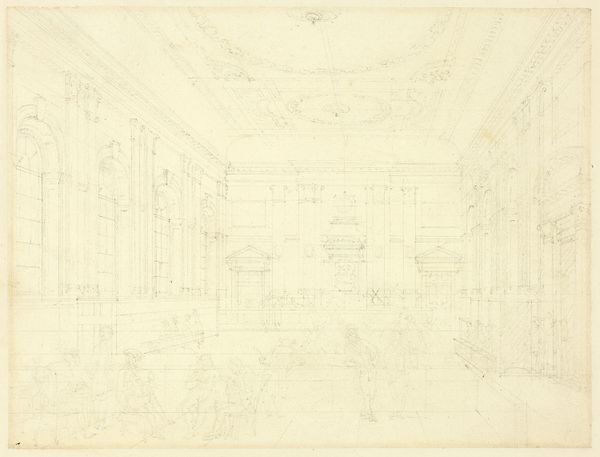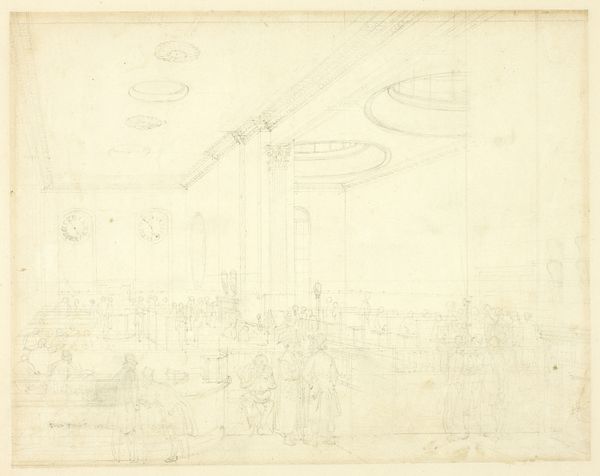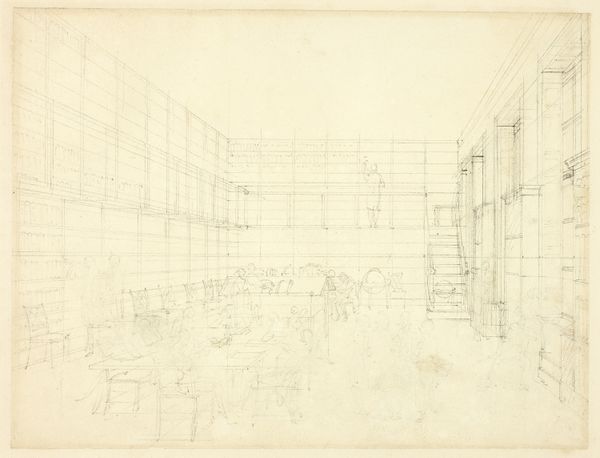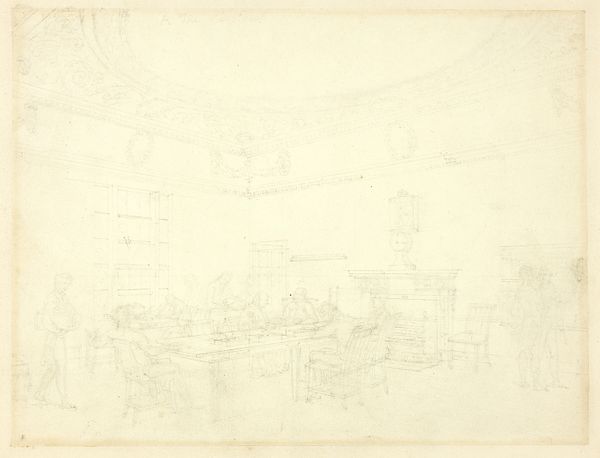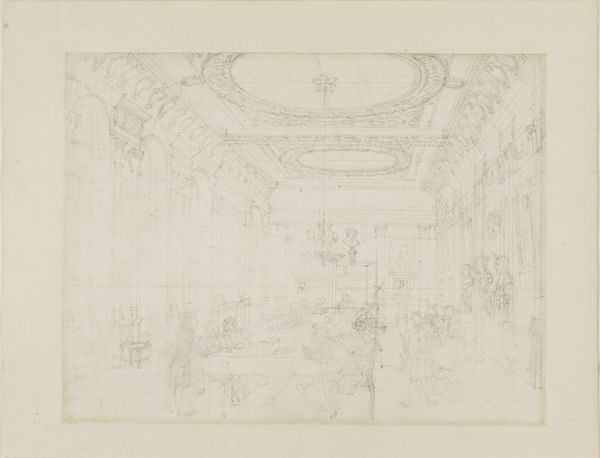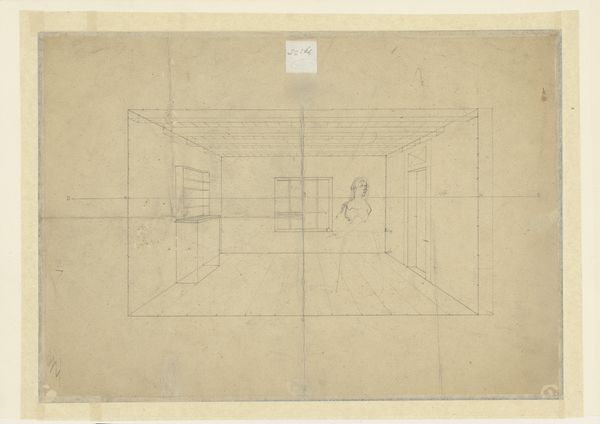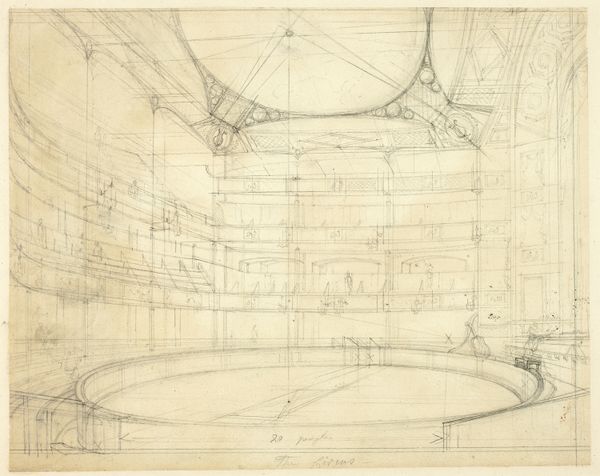
Study for The Roman Catholic Chapel, Lincoln's Inn Fields, from Microcosm of London c. 1808
0:00
0:00
drawing, print, etching, paper, graphite, architecture
#
drawing
#
neoclassicism
# print
#
etching
#
pencil sketch
#
paper
#
form
#
graphite
#
cityscape
#
history-painting
#
architecture
Dimensions: 199 × 259 mm
Copyright: Public Domain
Editor: This is "Study for The Roman Catholic Chapel, Lincoln's Inn Fields, from Microcosm of London," a drawing in graphite and etching by Augustus Charles Pugin, circa 1808. The delicate linework gives it an ethereal quality, like a memory being sketched. What can you tell me about its significance? Curator: This study offers insight into the complicated relationship between architectural representation and religious tolerance in early 19th-century London. Pugin's inclusion in the "Microcosm of London" suggests an emerging public interest in diverse urban spaces. Notice how the classical elements, the columns and the dome, are rendered with precision. Editor: Yes, the neoclassical style is evident. Was this a common style for Catholic churches at the time? Curator: Precisely! Its embrace signals the negotiation of Catholic identity within British society. The architecture hints at the ongoing struggle for acceptance and visibility. It subtly pushes boundaries while conforming to accepted styles. Editor: So the choice of neoclassical wasn't just aesthetic, but a strategic cultural statement? Curator: Exactly. Think about how public buildings shape civic identity. Pugin, by depicting this Catholic chapel in a widely circulated publication, is staking a claim for its place in London's evolving social landscape. Consider how prints like this one mediated public opinion, shaping ideas about religious spaces and their place within a diverse society. Editor: It's fascinating how much this drawing reveals about the cultural tensions of the time. Curator: Indeed, looking closer unveils not just lines on paper, but layers of socio-political dynamics being carefully negotiated through artistic representation.
Comments
No comments
Be the first to comment and join the conversation on the ultimate creative platform.
